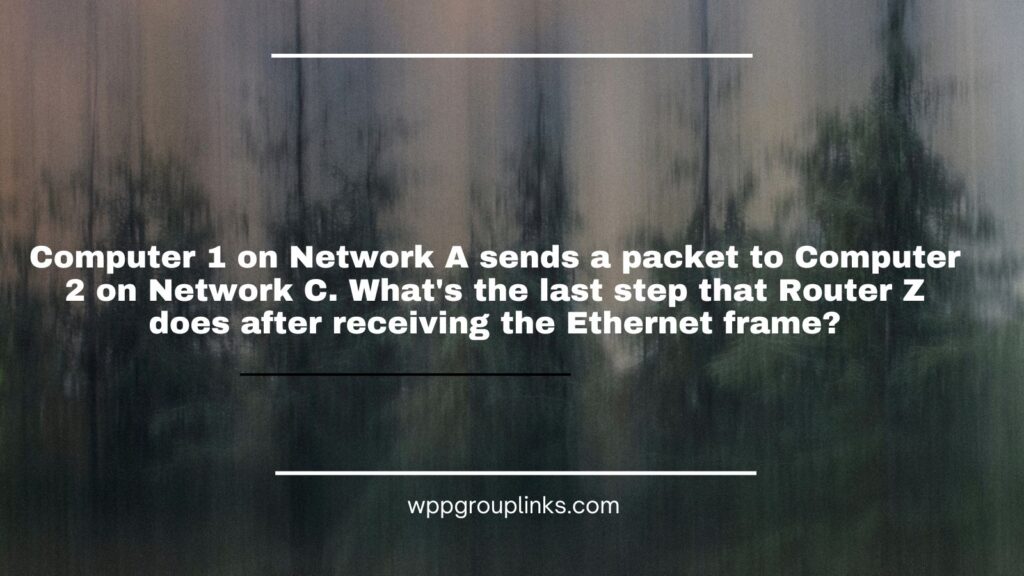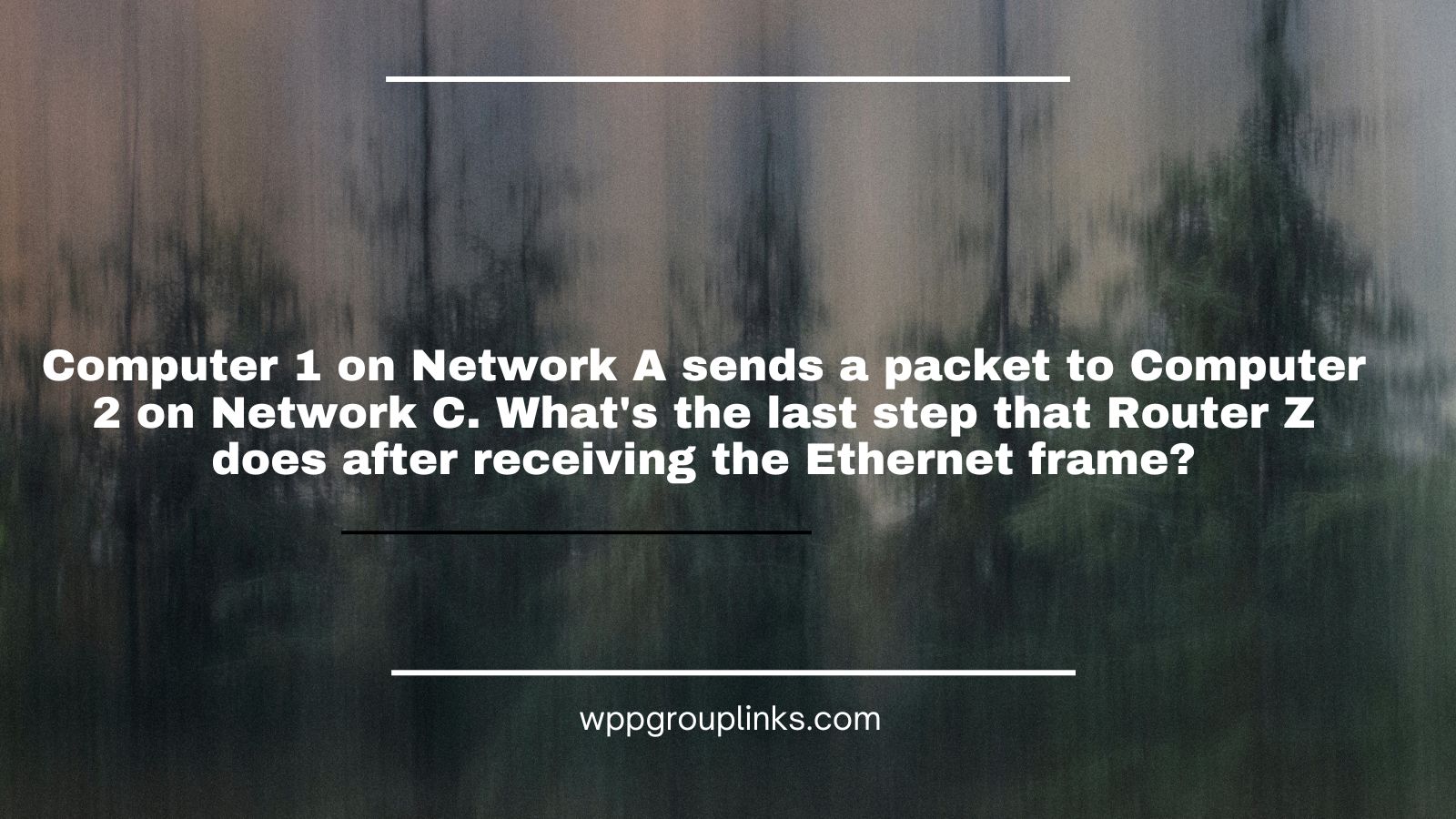
Q: Computer 1 on Network A sends a packet to Computer 2 on Network C. What’s the last step that Router Z does after receiving the Ethernet frame?
or
Q: Network A’s Computer 1 transmits a packet to Network C’s Computer 2. What action does Router Z take in its last moments after receiving the Ethernet frame?
- Sends back the packages to router Y for confirmation
- Decrements the TTL by 1, calculates a new checksum, and makes a new IP datagram. This new IP datagram is again encapsulated on a new Ethernet frame.
- Strips away the Ethernet frame, leaving the IP datagram. Performs a checksum calculation against the entire datagram
- Calculates a checksum and compares this checksum with the one in the Ethernet frame header
Explanation: Following the receipt of the Ethernet frame, Router Z performs the last step, which is to remove the Ethernet frame, leaving just the IP datagram. Following that, it applies a checksum computation to the full datagram to guarantee the genuineness of the data. After the checksum has been validated, Router Z will then proceed to send the IP datagram in the direction of its intended destination by using the routing information that is provided inside the IP header. Router Z prevents the packet from cycling forever by decreasing the Time-to-Live (TTL) field in the IP header by one if it is required to do so. If the TTL field approaches zero, the router discards the packet. In conclusion, Router Z will send the packet to the proper interface by using its routing database to determine the suitable destination.



